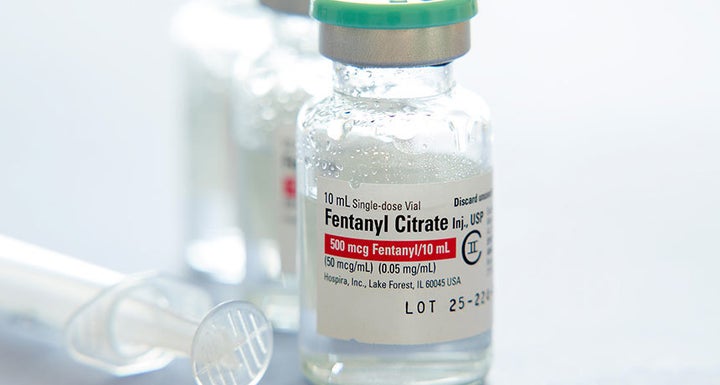
Louise Stanger is a speaker, educator, licensed clinician, social worker, certified daring way facilitator and interventionist who uses an invitational intervention approach to work with complicated mental health, substance abuse, chronic pain and process addiction clients.
The opioid epidemic is not something tucked away in textbooks or in newspaper headlines. It’s a public health crisis spreading through Midwestern states and claiming thousands of real American lives. As a clinician, interventionist and family consultant, my colleagues and I receive phone calls every day about a loved one whose addiction started with a prescription. What was once thought of as a problem reserved for extreme drug addicts, the poor, blue collar, down and out, or the homeless has made it into our middle class homes, communities and neighborhoods. David Armstrong, a contributor to Stat, a national publication dedicated to writing about the health of the nation, recently wrote a piece called “52 Weeks, 52 Faces” about the lives lost to the opioid epidemic. Now it’s our brothers and sisters, teachers and coaches, friends and loved ones wrestling with the stories of overdose.
What are the limits of this growing epidemic? The New York Times recently reported that opioid-related deaths accounted for 59,000 lives in 2016, a 19 percent increase from 2015. As such, “drug overdoses are now the leading cause of death among Americans under 50.”
The rise of the opioid epidemic is in no small part due to a synthetic drug called fentanyl. The National Institute on Drug Abuse (NIDA) reports that fentanyl is similar to morphine, however, 50 to 100 times more potent. The drug - used to treat cancer patients with severe pain and post-surgery recovery - has found its way from prescription to being illicitly manufactured and sold on the street. These illegal forms of fentanyl account for the tripling of drug overdose deaths from the drug in the span of two years - from over 3,000 in 2013 to nearly 10,000 in 2015. In fact, CNN reports fentanyl is the drug that killed famed musician Prince.
Like most drugs, fentanyl affects opioid receptors in the brain that control pain and emotion, giving the user immense pleasure, or the “high” they seek. The issue with fentanyl and why it’s so dangerous on the body is because the opioid receptors - the sites where the drug binds to to release dopamine for the feeling of euphoria - are found in the same region of the brain that controls breathing. According to NIDA, the high potency of a drug like fentanyl overwhelms the brain’s receptors and can cause users to stop breathing completely. Drug users are not aware of their limits with high potency drugs, walking a dangerous tightrope with overdose. And it’s this potency that may be the link to the recent spike in deaths.
Potency and unregulated synthetic drugs are a deadly combo. In the high stakes (and very illegal) game of producing and distributing unregulated drugs, it is common for dealers to “lace” drugs such as cocaine with higher potency drugs like fentanyl. As such, the user of the drug is unaware and incapable of assessing the potency of the cocaine, which may be harmful and cause an overdose, leading to respiratory failure. In this case, Narcan (i.e. naloxone), a medication that rapidly reverses the effects of opioids on the brain and revives the respiratory system to normal function, is the only way to save the person’s life. This is illustrated in the infamous scene in Quentin Tarantino’s film Pulp Fiction, whereby a young woman overdoses on cocaine and has a syringe of Narcan plunged into her chest to revive her.
Not only is the high potency of fentanyl alarming, it’s the method in which it is delivered to the body that may cause overdose, lead to addiction, and create uncomfortable withdrawal effects. Typically, fentanyl is administered through injection, transdermal patch (a medicated adhesive patch placed on the skin for the body to absorb the drug), or lozenges, reports NIDA. In fact, a drug manufacturer of fentanyl under the brand name Actiq administers the drug in the form of a lollipop - whereby the user sucks on a lozenge of medicine attached to a plastic stick.
However, outside of prescription, users of fentanyl snort, swallow or inject the drug. Injection is cause for worry. Users prefer this method because the drug goes straight into the bloodstream and rapidly produces the rewarding effects of opioids. In turn, this instant gratification to the brain is what causes addiction, and repeated users develop tolerance because the brain’s receptors become desensitized to the drug, necessitating higher dosage and potency. Injection may also lead to infection and because fentanyl users’ inhibitions are down while high, they may share needles, which is linked to the spread of infectious diseases like HIV.
Common signs and symptoms of a fentanyl overdose include:
- Confusion, dizziness or excessive drowsiness
- Difficulty thinking, speaking, breathing or walking
- Pale face, blue or purple-colored lips or fingernails
- Throwing up or choking sounds
- Small pupils
- Low blood pressure or slowed heart rate
- Limp body, coma or unresponsiveness
- Short, shallow breathing
- Respiratory failure
In addition to fentanyl’s spread through illegal channels, the drug’s grip on patients and clients experiencing chronic pain - obtained through a legal prescription - is inexplicably linked to pharmaceutical companies. In a recent NBC News investigation, a former employee of a big pharma company called Insys Therapeutics, blew the whistle on the company’s scheme to get doctor-prescribed patients hooked on the drugs it manufactures, which includes traces of fentanyl.
Patty Nixon, a former sales rep for the company, told NBC News she was instructed to “contact insurance companies on behalf of the patients and the doctors to get the medication approved and paid for by their insurance company.” The catch is that she would lie about oncology reports that didn’t exist and provide specific diagnosis codes that patients may or may not have been diagnosed with. In turn, doctors get kickbacks and incentives from big pharma companies for pushing their drugs. And the patients are pleased in the short-term because the drugs help manage their pain. However, the side effects are devastating.
Another result coming from the onslaught of fentanyl and other opioids is NPR’s report that the state of Ohio recently filed a lawsuit against five major drug manufacturers that have “helped unleash a health care crisis that has had far-reaching financial, social, and deadly consequences.” Moreover, the lawsuit alleges that “the drug companies engaged in fraudulent marketing regarding the risks and benefits of prescription opioids which fueled Ohio’s opioid epidemic.” Though the problem first started in the 1990’s when the healthcare industry was duped into believing there were no addictive risks associated with these big pharma drugs, it seems to be coming full swing with the rise of new synthetic drugs and the ease in which to obtain them.
The rapid evolution of new and stronger drugs is a culprit in the opioid epidemic. For example, a new version of fentanyl has made its way into the illegal drug trade. Carfentanil, a synthetic variant of fentanyl that is 100 times more potent, is used to sedate large zoo animals such as a 2,000 pound African elephant, reports Rolling Stone Magazine.
“The side effect of carfentanil is death,” says Ohio Police Chief Tom Synan to Rolling Stone about the drug’s impact on human usage. And that is just what it did when last summer 96 heroin users died of overdose. The heroin was reportedly laced with carfentanil. So powerful is carfentanil that a dosage the size of a grain of salt is enough to kill a person, so dealers lace drugs with a microscopic amount, making it nearly impossible for users to detect its presence.
The picture is clear that drugs like fentanyl and other opioids has reached its apex. Its social and economic impact on communities in America and even abroad is forcing health care, law enforcement, pharmaceuticals, and government to work together to solve this problem. Treatment centers and clinicians must also develop, communicate and administer alternative forms of healing for people experiencing chronic pain.
To learn more about Louise Stanger and her interventions and other resources, visit her website.
